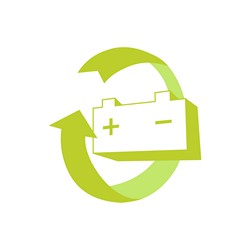More efficient battery recycling
Commercial methods for recycling lithium-ion (Li-ion) and nickel-metal hydride (NiMH) batteries use mainly furnace-based processes – using heat to extract and purify metals. Such processes are efficient for recovering metals, but not non-metallic substances. Li-ion and NiMH batteries are found in industrial equipment and everyday consumer products such as mobile phones and portable media players. They are also prevalent in hybrid and electric vehicles, which are becoming increasingly popular. Developments in battery technology over recent years have focused on Li-ion chemistries, and the amount of metal they contain has fallen in newer battery types. This reduction in metal content limits furnace-based recycling processes, which can’t recover non-metallic content. As demand grows for more material to be recovered, furnace-based recycling faces mounting challenges. The EU-funded COLABATS(opens in new window) (Cobalt and lanthanide recovery from batteries) initiative investigated new industrial processes for recycling the critical metals and key economic metals from waste batteries. The metals that the scientists focused on were cobalt and the lanthanides as well as nickel and lithium, two key economic metals. To do this, they studied hydrometallurgical processes for recycling Li-ion and NiMH battery waste. Unlike furnace-based processes, hydrometallurgical processes use selective leaching of metallic compounds to form a solution from which metals can be recovered. COLABATS scientists demonstrated the feasibility of hydrometallurgical separations for Li-ion and NiMH battery waste based on use of a particular type of solvent. The solvent is known as a deep eutectic solvent, and is composed of lactic acid, choline chloride, citric acid and water. This deep eutectic solvent has properties that allow it to dissolve most metal oxides and metals. It is composed of non-toxic ingredients and is much less costly than other ionic liquids. The novel COLABATS process requires refining, but once implemented the technology has the potential for more efficient and sustainable recovery processes. The new technology will reduce landfill waste by recovering recyclable metals and reduce critical metal consumption.







